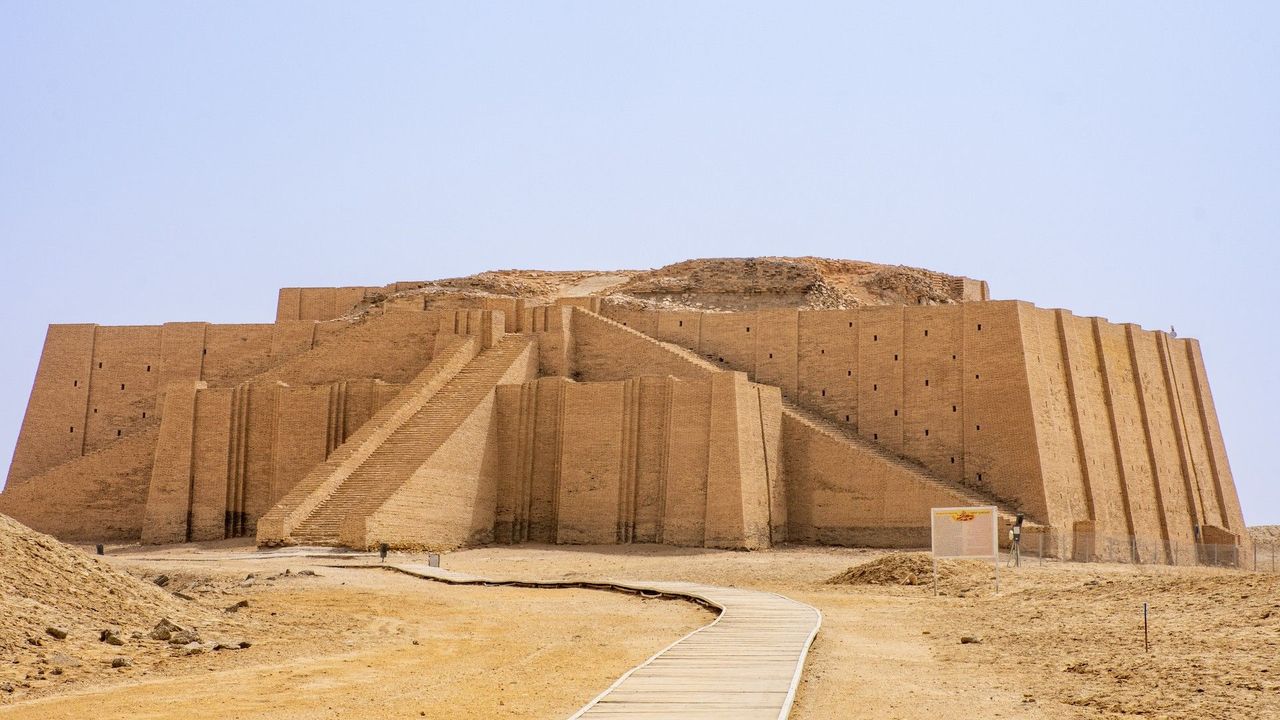sztroy.info – The Ziggurat of Ur, a massive stepped pyramid, stands as a testament to the religious fervor and architectural prowess of the ancient Sumerian civilization. This colossal structure, located in the modern-day city of Muqayyar in southern Iraq, was once a sacred site dedicated to the moon god Nanna. The ziggurat’s imposing presence and intricate design have captivated the imaginations of archaeologists and historians for centuries.
A Sacred Mountain
The ancient Sumerians believed that ziggurats were artificial mountains that connected Earth to the heavens. They were seen as sacred places where gods and mortals could interact. The Ziggurat of Ur was the centerpiece of the ancient city of Ur, a major religious and political center during the third millennium BCE.
Architectural Marvel
The Ziggurat of Ur was a massive structure, rising to a height of approximately 65 feet. It was built in three stages, each progressively smaller than the one below. The ziggurat was constructed using mud-brick, a material commonly used in ancient Mesopotamian architecture. The exterior of the structure was likely adorned with colorful glazed tiles, creating a visually stunning spectacle.
A Temple to the Moon God
At the summit of the ziggurat, a temple was built to honor the moon god Nanna. This temple served as a place of worship and sacrifice, and it was likely only accessible to priests and other high-ranking officials. The ascent to the temple involved climbing a series of ramps and stairs, symbolizing the journey to the divine realm.
Decline and Rediscovery
After the decline of the Sumerian civilization, the Ziggurat of Ur fell into disrepair and was eventually buried beneath layers of silt and debris. In the early 20th century, British archaeologists led by Sir Leonard Woolley excavated the site, uncovering the magnificent ruins of the ancient city of Ur, including the Ziggurat. Woolley’s excavations revealed the intricate details of the ziggurat’s construction and provided valuable insights into the religious beliefs and practices of the ancient Sumerians.
A Legacy of Faith and Engineering
The Ziggurat of Ur stands as a remarkable achievement of ancient engineering and a powerful symbol of the Sumerian people’s deep connection to the divine. Its enduring legacy continues to inspire awe and wonder, reminding us of the ingenuity and creativity of our ancestors.
